Stabilized High Clay Content Lateritic Soil Using Cement-FGD Gypsum Mixtures for Road Subbase Applications
Abstract
1. Introduction
2. Materials and Methodology
2.1. Materials
2.1.1. Lateritic Soil
2.1.2. Stabilizing Agents
2.2. Methodology and Experimental Works
2.2.1. Test Standard
- Physical properties
- Specific gravity tests in accordance with ASTM D854 [62];
- Soil particle size distribution by wet sieving tests in accordance with ASTM D422-63e2 [63];
- Soil particle size distribution by hydrometer tests in accordance with ASTM D422-63e2 [63];
- Liquid limit tests and plastic limit tests in accordance with ASTM D4318 [64].
- Strength development of soil–cement–FGD gypsum mixtures
- Modified Proctor compaction tests in accordance with ASTM D1557 [56];
- Unconfined compressive strength (UCS) tests in accordance with ASTM D1633 [57];
- California Bearing Ratio (CBR) tests in accordance with ASTM D1883 [58];
- Microstructure analyses by a scanning electron microscope (SEM), JEOL JSM-5910LV (JEOL Ltd., Tokyo, Japan).
2.2.2. Methodology
2.2.3. Sample Preparation and Testing
3. Results and Discussion
3.1. Compaction
- Adding cement and FGD gypsum to the substandard lateritic soil altered its compaction characteristics as indicated by a higher OMC and a lower OMC (Figure 9). The cause of the lower OMC–higher MDD characteristic was that some of the water in the mixture was consumed by the hydration reaction between cement, FGD gypsum, and water, which yielded solid cementitious products, the generation of which results in more solids in the mixture system, and these cementitious products occupied available void spaces in the mixture system. Consequently, a less porous matrix of the soil–cement–FGD gypsum mixture was obtained, leading to fewer void spaces for water to occupy and lower OMC characteristics of the mixture. Furthermore, those solid cementitious products have a higher specific gravity which led to a much larger overall specific gravity of the mixture compared to the substandard lateritic soil. Therefore, the soil–cement–FGD gypsum mixtures provided a higher MDD than that of the reference soil.
- The soil–cement–FGD gypsum mixtures which were compacted at the larger OMC conditions (the wet-side compaction) showed much higher dry densities compared to those of the substandard lateritic soil. At the MDD, the air void is equal to 8% (see the air void line of 8% in Figure 9) for the reference soil, but all study mixtures demonstrated noticeably fewer air voids. Apart from more solid fractions caused by the new cementitious products in the mixture system, the leftover cement, and FGD gypsum after the hydration reaction assisted in filling available air voids in the mixture system, which led to higher dry densities in the wet-side compaction. This would indicate the addition of a cement–FGD gypsum mixture to the soil provided the lower moisture sensitivity characteristics of a geomaterial.
- A very narrow range (11.20–12.19%) of OMC values was derived for the soil–cement–FGD gypsum mixtures, as seen in a series of compaction curves in Figure 9. This almost identical OMC value caused the presence of Ca2+ in the soil–cement–FGD gypsum matrix, which resulted in a reduction of repulsive forces between clay particles due to Ca2+ absorption on the surfaces of clay particles in the system. Therefore, the formation of a new edge-to-face arrangement of platy-shaped particles of clay existed [67]. For this unique clay particle arrangement, the unchangeable liquid limit phenomenon of the soil–cement–FGD gypsum mixtures would be expected. This phenomenon can govern a relatively constant OMC value of the mix, based on the findings of [68,69]. They reported that for the clayey soil, its liquid limit was a governing factor in controlling its OMC value.
3.2. Strength Development
3.2.1. Strength Development Concerning Cement Content, FGD Gypsum Content, and Curing Period
3.2.2. Strength Increase Rate (SIR)
3.2.3. Strength Development with Respect To the Water to Cement and FGD Gypsum (w/(c + g)) Ratio
3.3. Moisture Sensitivity
4. Roles of FGD-Gypsum Added in the Soil–cement–FGD Gypsum Mixture through SEM Analyses
5. Application of the Cement–FGD Gypsum Soil Stabilization
6. Conclusions
Author Contributions
Funding
Institutional Review Board Statement
Informed Consent Statement
Data Availability Statement
Acknowledgments
Conflicts of Interest
References
- Mitchell, J.K.; Soga, K. Fundamentals of Soil Behavior; John Wiley & Sons: New York, NY, USA, 2005; Volume 3, ISBN 978-0-471-46302-3. [Google Scholar]
- De Carvalho, J.C.; de Rezende, L.R.; Cardoso, F.B.d.F.; Lucena, L.C.d.F.L.; Guimarães, R.C.; Valencia, Y.G. Tropical soils for highway construction: Peculiarities and considerations. Transp. Geotech. 2015, 5, 3–19. [Google Scholar] [CrossRef]
- Schaetzl, R.J.; Thompson, M.L. Soils: Genesis and Geomorphology; Cambridge University Press: New York, NY, USA, 2015. [Google Scholar]
- Ko, T.H. Nature and properties of lateritic soils derived from different parent materials in Taiwan. Sci. World J. 2014, 2014, 1–4. [Google Scholar] [CrossRef] [PubMed]
- Oyelami, C.A.; van Rooy, J.L. A review of the use of lateritic soils in the construction/development of sustainable housing in Africa: A geological perspective. J. Afr. Earth Sci. 2016, 119, 226–237. [Google Scholar] [CrossRef]
- DH-S 205/2532 Standard Specification of Subbase Aggregate Material; Department of Highways: Bangkok, Thailand, 1989. (In Thai)
- DNER-ES Mechanical Stabilization of Subbase Layers Using Lateritic Soils; Brazilian National Highway Department: Rio de Janeiro, Brazil, 1974; pp. 48–74.
- Highway Manual Part 1: Design. Volume III: Pavements and Materials Design; Federal Ministry of Works: Abuja, Nigeria, 2013.
- Jabatan Kerja Raya (JKR). Standard Specification for Road Works; Section 4: Flexible Pavement; Jabatan Kerja Raya (JKR): Kuala Lumpur, Malaysia, 2008.
- Charman, J.H. Laterite in Road Pavements; Construction Industry Research and Information Association: London, UK, 1988; ISBN 0860172759. [Google Scholar]
- Ruenkrairergsa, T. Proposed Specifications of Soil Aggregates for Low-Volume Roads; Department of Highways: Bangkok, Thailand, 1987. [Google Scholar]
- Simon, A.B.; Giesecke, J.; Bidlo, G. Use of lateritic soils for road construction in North Dahomey. Eng. Geol. 1973, 7, 197–218. [Google Scholar] [CrossRef]
- Amu, O.O.; Bamisaye, O.F.; Komolafe, I.A. The suitability and lime stabilization requirement of some lateritic soil samples as pavement. Int. J. Pure Appl. Sci. Technol. 2011, 2, 29–46. [Google Scholar]
- Otunyo, A.W.; Chukuigwe, C.C. Investigation of the impact of palm bunch ash on the stabilization of poor lateritic soil. Niger. J. Technol. 2018, 37, 600–604. [Google Scholar] [CrossRef]
- Onyelowe, K.C. Nanosized palm bunch ash (NPBA) stabilisation of lateritic soil for construction purposes. Int. J. Geotech. Eng. 2019, 13, 83–91. [Google Scholar] [CrossRef]
- Eisazadeh, A.; Kassim, K.A.; Nur, H. Solid-state NMR and FTIR studies of lime stabilized montmorillonitic and lateritic clays. Appl. Clay Sci. 2012, 67, 5–10. [Google Scholar] [CrossRef]
- Mengue, E.; Mroueh, H.; Lancelot, L.; Eko, R.M. Mechanical improvement of a fine-grained lateritic soil treated with cement for use in road construction. J. Mater. Civ. Eng. 2017, 29. [Google Scholar] [CrossRef]
- Musec, P. Soil improvement methods for road construction. Int. Multidiscip. Sci. GeoConference SGEM 2018, 18, 637–644. [Google Scholar] [CrossRef]
- Huan, Y.; Siripun, K.; Jitsangiam, P.; Nikraz, H. A preliminary study on foamed bitumen stabilisation for Western Australian pavements. Sci. Res. Essays 2010, 5, 3687–3700. [Google Scholar]
- Jitsangiam, P.; Boonserm, K.; Phenrat, T.; Chummuneerat, S.; Chindaprasirt, P.; Nikraz, H. Recycled concrete aggregates in roadways: Laboratory examination of self-cementing characteristics. J. Mater. Civ. Eng. 2015, 27, 04014270. [Google Scholar] [CrossRef]
- Das, B.M. Principles of Foundation Engineering, Cengage Learning; Cengage Learning: Boston, MA, USA, 2011. [Google Scholar]
- Moh, Z.C.; Chin, Y.P.; Ng, S.C. Cement Stabilization of lateritic soils. In Proceedings of the Third Asian Regional Conference on Soil Mechanics and Foundation Engineering, Haifa, Israel, 25–28 September 1967. [Google Scholar]
- Chen, H.; Wang, Q. The behaviour of organic matter in the process of soft soil stabilization using cement. Bull. Eng. Geol. Environ. 2006, 65, 445–448. [Google Scholar] [CrossRef]
- Joel, M.; Agbede, I.O. Mechanical-cement stabilization of laterite for use as flexible pavement material. J. Mater. Civ. Eng. 2011, 23. [Google Scholar] [CrossRef]
- Goodarzi, A.R.; Akbari, H.R.; Salimi, M. Enhanced stabilization of highly expansive clays by mixing cement and silica fume. Appl. Clay Sci. 2016, 132–133, 675–684. [Google Scholar] [CrossRef]
- Apampa, O.A. Environmental benefits of corn cob ash in lateritic soil cement stabilization for road works. African J. Sci. Technol. Innov. Dev. 2019, 11, 427–431. [Google Scholar] [CrossRef]
- Li, W.; Ni, P.; Yi, Y. Comparison of reactive magnesia, quick lime, and ordinary Portland cement for stabilization/solidification of heavy metal-contaminated soils. Sci. Total Environ. 2019, 671, 741–753. [Google Scholar] [CrossRef] [PubMed]
- Sounthararajah, A.; Bui, H.H.; Nguyen, N.; Jitsangiam, P.; Kodikara, J. Early-age fatigue damage assessment of cement-treated bases under repetitive heavy traffic loading. J. Mater. Civ. Eng. 2018, 30. [Google Scholar] [CrossRef]
- Soroka, I. Portland Cement Paste and Concrete; Macmillan International Higher Education: London, UK, 1979; ISBN 1349039942. [Google Scholar]
- Dunuweera, S.P.; Rajapakse, R.M.G. Cement types, composition, uses and advantages of nanocement, environmental impact on cement production, and possible solutions. Adv. Mater. Sci. Eng. 2018, 2018, 1–11. [Google Scholar] [CrossRef]
- Wansom, S.; Chintasongkro, P.; Srijampan, W. Water resistant blended cements containing flue-gas desulfurization gypsum, Portland cement and fly ash for structural applications. Cem. Concr. Compos. 2019, 103, 134–148. [Google Scholar] [CrossRef]
- Chen, C.; Habert, G.; Bouzidi, Y.; Jullien, A. Environmental impact of cement production: Detail of the different processes and cement plant variability evaluation. J. Clean. Prod. 2010, 18, 478–485. [Google Scholar] [CrossRef]
- Benhelal, E.; Zahedi, G.; Shamsaei, E.; Bahadori, A. Global strategies and potentials to curb CO2 emissions in cement industry. J. Clean. Prod. 2013, 51, 142–161. [Google Scholar] [CrossRef]
- He, Z.; Zhu, X.; Wang, J.; Mu, M.; Wang, Y. Comparison of CO 2 emissions from OPC and recycled cement production. Constr. Build. Mater. 2019, 211, 965–973. [Google Scholar] [CrossRef]
- Brooks, R.M. Soil stabilization with flyash and rice husk ash. Int. J. Res. Rev. Appl. Sci. 2009, 1, 209–217. [Google Scholar]
- Pourakbar, S.; Asadi, A.; Huat, B.B.K.; Fasihnikoutalab, M.H. Stabilization of clayey soil using ultrafine palm oil fuel ash (POFA) and cement. Transp. Geotech. 2015, 3, 24–35. [Google Scholar] [CrossRef]
- Horpibulsuk, S.; Phetchuay, C.; Chinkulkijniwat, A. Soil stabilization by calcium carbide residue and fly ash. J. Mater. Civ. Eng. 2012, 24. [Google Scholar] [CrossRef]
- Canakci, H.; Celik, F.; Bizne, M.O.A.; Bizne, M.O.A. Stabilization of clay with using waste beverage can. Procedia Eng. 2016, 161, 595–599. [Google Scholar] [CrossRef]
- Peyronnard, O.; Benzaazoua, M. Estimation of the cementitious properties of various industrial by-products for applications requiring low mechanical strength. Resour. Conserv. Recycl. 2011, 56, 22–33. [Google Scholar] [CrossRef]
- Crossin, E. The greenhouse gas implications of using ground granulated blast furnace slag as a cement substitute. J. Clean. Prod. 2015, 95, 101–108. [Google Scholar] [CrossRef]
- Rafieizonooz, M.; Mirza, J.; Salim, M.R.; Hussin, M.W.; Khankhaje, E. Investigation of coal bottom ash and fly ash in concrete as replacement for sand and cement. Constr. Build. Mater. 2016, 116, 15–24. [Google Scholar] [CrossRef]
- Yoobanpot, N.; Jamsawang, P.; Horpibulsuk, S. Strength behavior and microstructural characteristics of soft clay stabilized with cement kiln dust and fly ash residue. Appl. Clay Sci. 2017, 141, 146–156. [Google Scholar] [CrossRef]
- Srivastava, R.K.; Jozewicz, W. Flue gas desulfurization: The state of the art. J. Air Waste Manag. Assoc. 2001, 51, 1676–1688. [Google Scholar] [CrossRef]
- Huang, J.T. Sulfur dioxide (SO2) emissions and government spending on environmental protection in China2014Evidence from spatial econometric analysis. J. Clean. Prod. 2018, 175, 431–441. [Google Scholar] [CrossRef]
- Dontsova, K.; Lee, Y.B.; Slater, B.K.; Bigham, J.M. Gypsum for Agricultural Use in Ohio: Sources and Quality of Available Products; The Ohio State University: Columbus, OH, USA, 2005. [Google Scholar]
- Songpoon, J. Effects of Additives on Growth Mechanism of FGD-Gypsum Crystals from Mae Moh Power Plant; Chiang Mai University: Chiang Mai, Thailand, 2011. [Google Scholar]
- Lei, D.Y.; Guo, L.P.; Sun, W.; Liu, J.P.; Miao, C.W. Study on properties of untreated FGD gypsum-based high-strength building materials. Constr. Build. Mater. 2017, 153, 765–773. [Google Scholar] [CrossRef]
- Watts, D.B.; Dick, W.A. Sustainable uses of FGD gypsum in agricultural systems: Introduction. J. Environ. Qual. 2014, 43, 246–252. [Google Scholar] [CrossRef]
- Kaweewong, J. Using Flue Gas Desulfurization (FGD) Gypsum, By-Product of Coal-Fired Power Plants in Agriculture. King Mongkuts Agric. J. 2018, 36, 161–172. [Google Scholar]
- American Coal Ash Association. An American Recycling Success Story: Beneficial Use Of Coal Combustion Products; American Coal Ash Association: Farmington Hills, MI, USA, 2019. [Google Scholar]
- European Coal Combustion Products Association (ECOBA). Production and Utilisation of CCPs in 2016 in Europe; European Coal Combustion Products Association: Essen, Germany, 2016. [Google Scholar]
- Burkart, B.; Goss, G.C.; Kern, J.P. The role of gypsum in production of sulfate-induced deformation of lime-stabilized soils. Environ. Eng. Geosci. 1999, 173–187. [Google Scholar] [CrossRef]
- Degirmenci, N.; Okucu, A.; Turabi, A. Application of phosphogypsum in soil stabilization. Build. Environ. 2007, 42, 3393–3398. [Google Scholar] [CrossRef]
- Shen, Z.; Cao, Y.; Fang, L. Experimental Investigation of Rapid Stabilization of Soft Clay Soils Using Chemical Admixtures. Soil Mech. Found. Eng. 2017, 54, 202–210. [Google Scholar] [CrossRef]
- Kuttah, D.; Sato, K. Review on the effect of gypsum content on soil behavior. Transp. Geotech. 2015, 4, 28–37. [Google Scholar] [CrossRef]
- ASTM D1557-12e1 Standard Test Methods for Laboratory Compaction Characteristics of Soil Using Modified Effort (56,000ft-lbf/ft3 (2700 kN-m/m3)); ASTM International: West Conshohocken, PA, USA, 2012. [CrossRef]
- ASTM D1633-17 Standard Test Methods for Compressive Strength of Molded Soil-Cement Cylinders; ASTM International: West Conshohocken, PA, USA, 2017. [CrossRef]
- ASTM D1883-16 Standard Test Method for California Bearing Ratio (CBR) of Laboratory-Compacted Soils; ASTM International: West Conshohocken, PA, USA, 2016. [CrossRef]
- ASTM D2487-17 Standard Practice for Classification of Soils for Engineering Purposes (Unified Soil Classification System); ASTM International: West Conshohocken, PA, USA, 2017. [CrossRef]
- ASTM C150-16 Standard Specification for Portland Cement; ASTM International: West Conshohocken, PA, USA, 2019. [CrossRef]
- Boonserm, K. Effects of Organic and Inorganic Additives on Hydration Reaction; Chiang Mai University: Chiang Mai, Thailand, 2008. [Google Scholar]
- ASTM D854 Standard Test for Specific Gravity of Soil Solids by Water Pycnometer; ASTM International: West Conshohocken, PA, USA, 2010.
- ASTM D422-63e2 Standard Test Method for Particle-Size Analysis of Soils; ASTM International: West Conshohocken, PA, USA, 2007.
- ASTM D4318—17e1 Standard Test Methods for Liquid Limit, Plastic Limit, and Plasticity Index of Soils; ASTM International: West Conshohocken, PA, USA, 2017. [CrossRef]
- Osula, D.O.A. A comparative evaluation of cement and lime modification of laterite. Eng. Geol. 1996, 42, 71–81. [Google Scholar] [CrossRef]
- Mengue, E.; Mroueh, H.; Lancelot, L.; Eko, R.M. Physicochemical and consolidation properties of compacted lateritic soil treated with cement. Soils Found. 2017, 57, 60–79. [Google Scholar] [CrossRef]
- Chew, S.H.; Kamruzzaman, A.H.M.; Lee, F.H. Physicochemical and engineering behavior of cement treated clays. J. Geotech. Geoenviron. Eng. 2004, 130, 696–706. [Google Scholar] [CrossRef]
- Nagaraj, T.S.; Banu, Z. Generalization of Abrams’ law. Cem. Concr. Res. 1996, 26, 933–942. [Google Scholar] [CrossRef]
- Horpibulsuk, S.; Miura, N.; Nagaraj, T.S. Assessment of strength development in cement-admixed high water content clays with Abrams’ law as a basis. Geotechnique 2003, 53, 439–444. [Google Scholar] [CrossRef]
- Uddine, K. Strength and Deformation Behaviour of Cement Treated Bankok Clay; Asian Institute of Technology: Bangkok, Thailand, 1994. [Google Scholar]
- Horpibulsuk, S.; Katkan, W.; Sirilerdwattana, W.; Rachan, R. Strength development in cement stabilized low plasticity and coarse grained soils: Laboratory and field study. Soils Found. 2006, 46, 351–366. [Google Scholar] [CrossRef]
- Horpibulsuk, S.; Rachan, R.; Chinkulkijniwat, A.; Raksachon, Y.; Suddeepong, A. Analysis of strength development in cement-stabilized silty clay from microstructural considerations. Constr. Build. Mater. 2010, 24, 2011–2021. [Google Scholar] [CrossRef]
- Kampala, A.; Jitsangiam, P.; Pimraksa, K.; Chindaprasirt, P. An investigation of sulfate effects on compaction characteristics and strength development of cement-treated sulfate bearing clay subgrade. Road Mater. Pavement Des. 2020, 1–14. [Google Scholar] [CrossRef]
- Abrams, D.A. Design of Concrete Mixtures; Structural Materials Research Laboratory, Lewis Institute: Chicago, IL, USA, 1919. [Google Scholar]
- DH-S 206/2532 Standard Specification of Soil Cement Subbase; Department of Highways: Bangkok, Thailand, 1989. (In Thai)
- Portland Cement Association. Ettringite Formation and the Performance of Concrete; Portland Cement Association: Skokie, IL, USA, 2001. [Google Scholar]
- Peng, J.; Zhang, J.; Qu, J. Mechanism of the formation and transformation of ettringite. J. Wuhan Univ. Technol. Mater. Sci. Ed. 2006, 21, 158–161. [Google Scholar] [CrossRef]
- Dermatas, D. Ettringite-induced swelling in soils: State-of-the-art. Appl. Mech. Rev. 1995, 48, 659–673. [Google Scholar] [CrossRef]
- Christensen, A.N.; Jensen, T.R.; Hanson, J.C. Formation of ettringite, Ca6Al2 (SO4) 3 (OH) 12·26H2O, AFt, and monosulfate, Ca4Al2O6 (SO4)·14H2O, AFm-14, in hydrothermal hydration of Portland cement and of calcium aluminum oxide—calcium sulfate dihydrate mixtures studied by in situ synchrotron X-ray. J. Solid State Chem. 2004, 177, 1944–1951. [Google Scholar] [CrossRef]
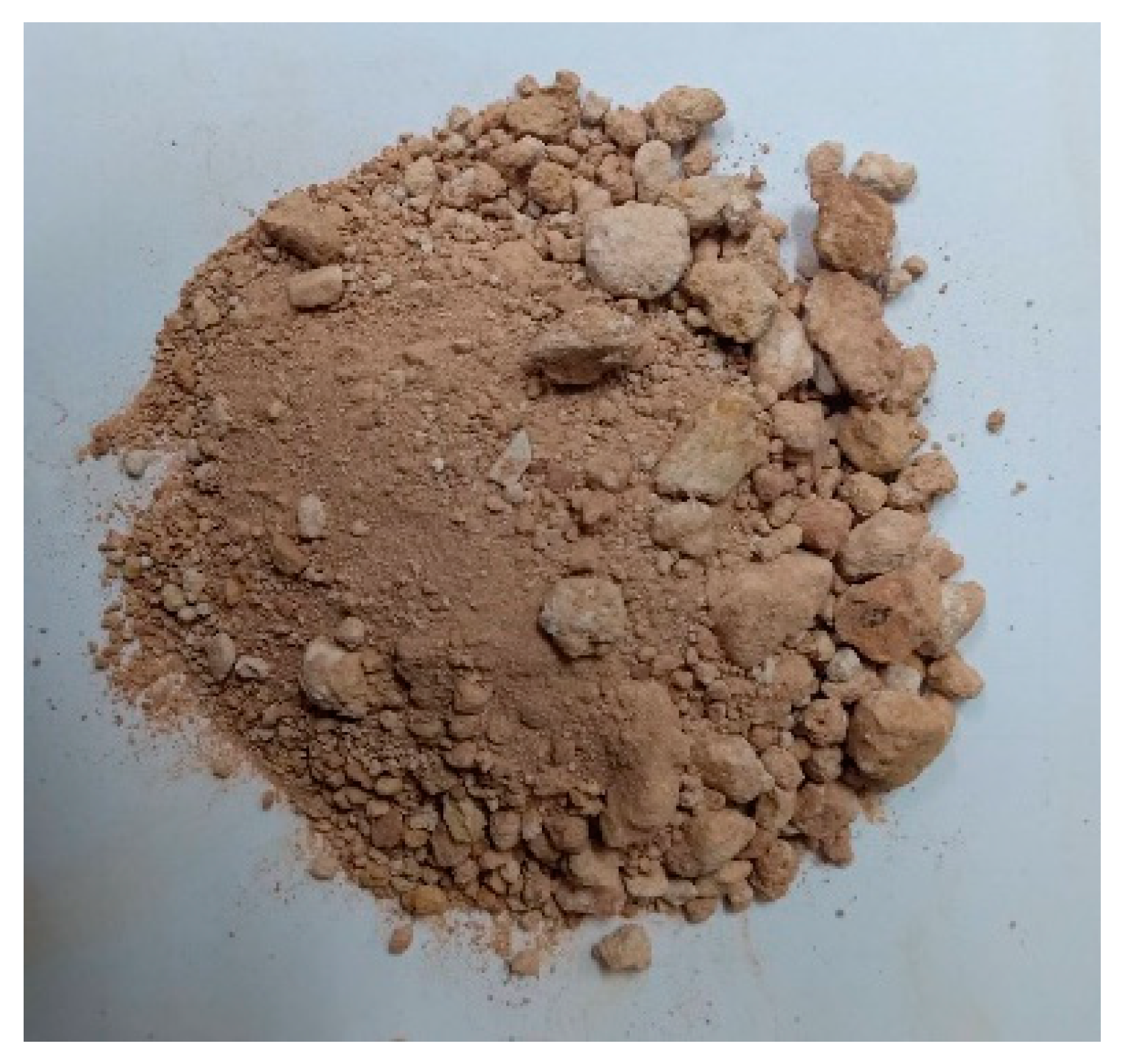


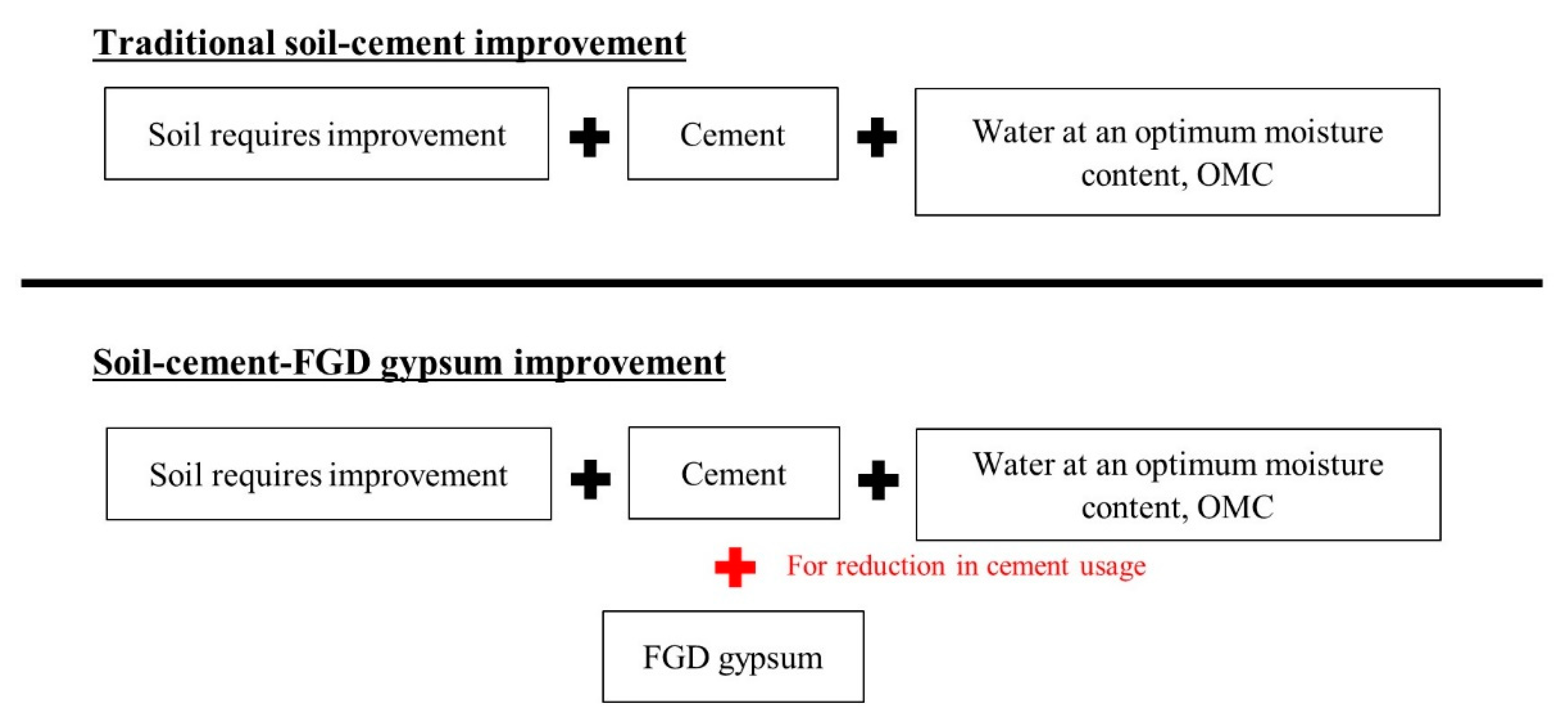
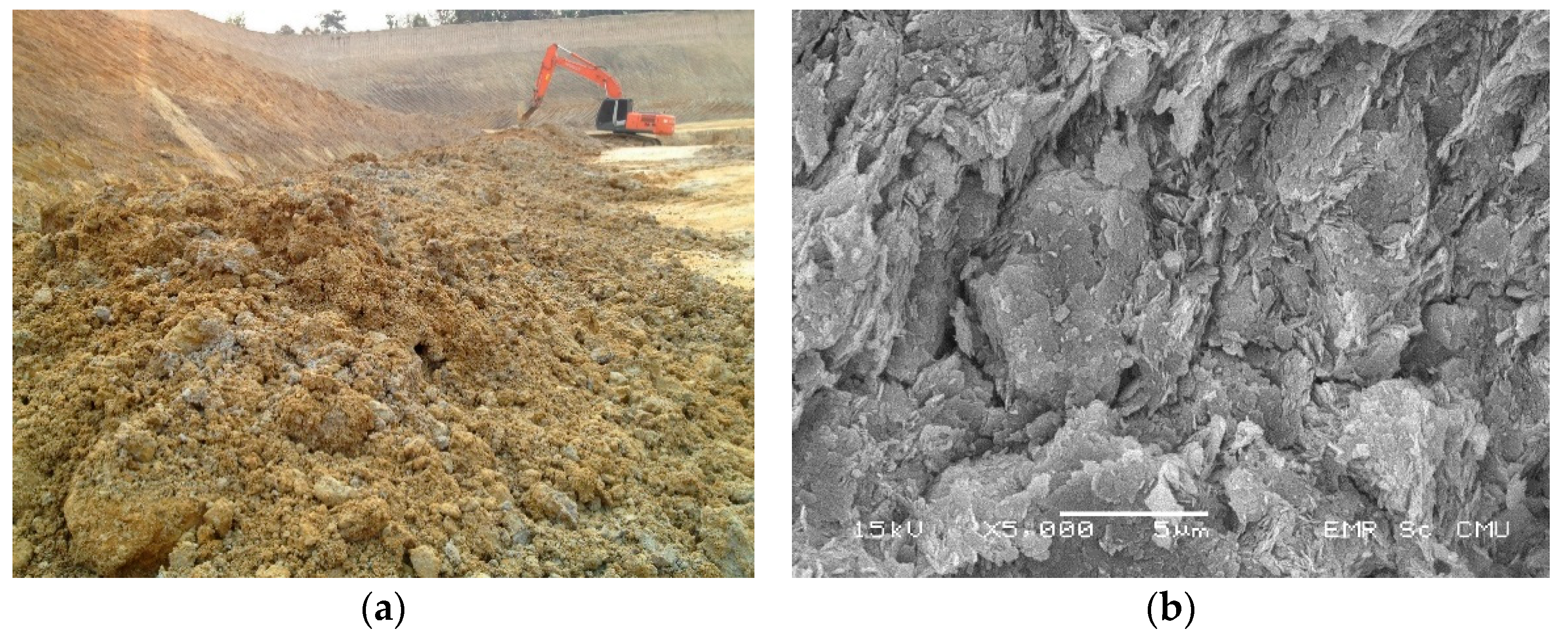

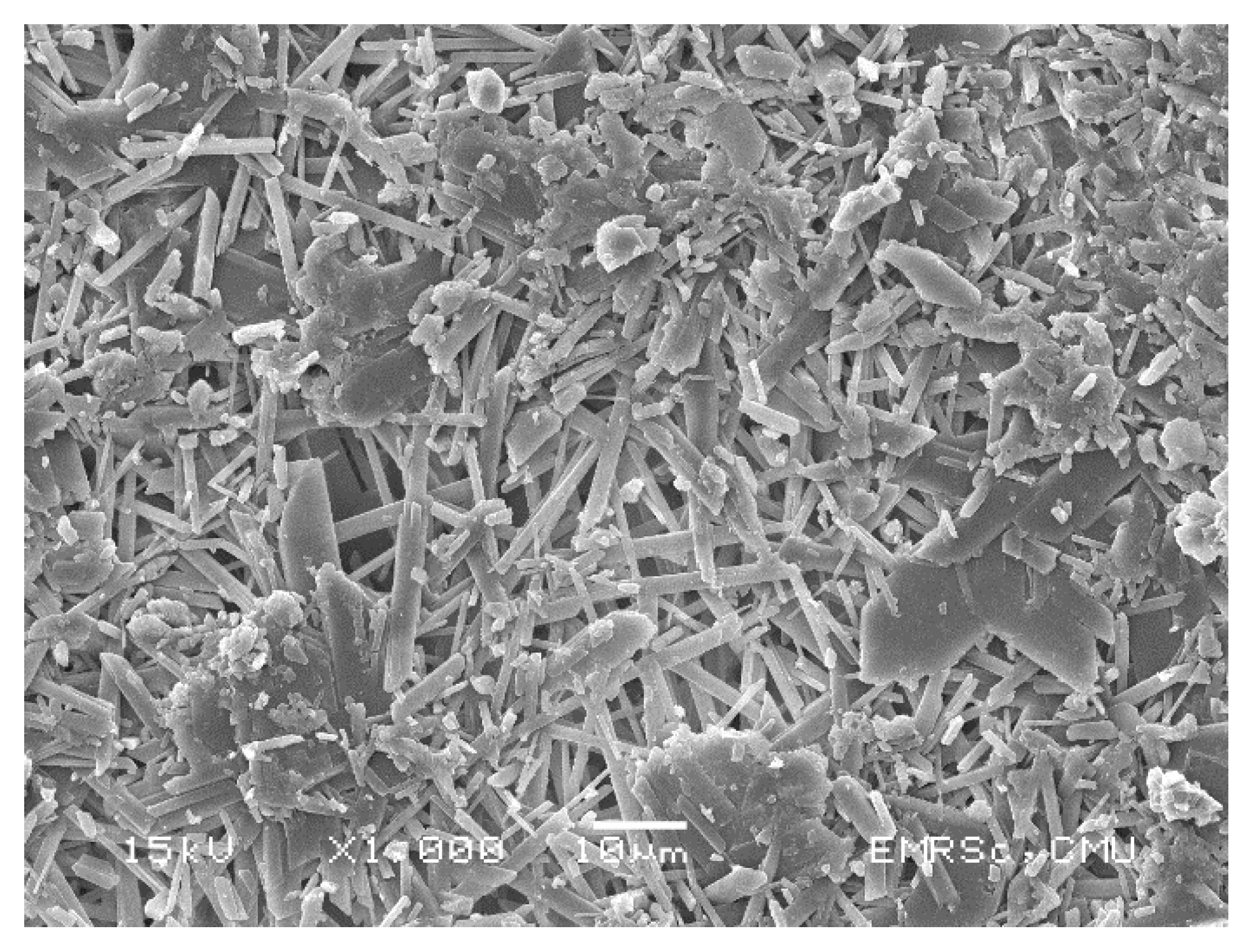

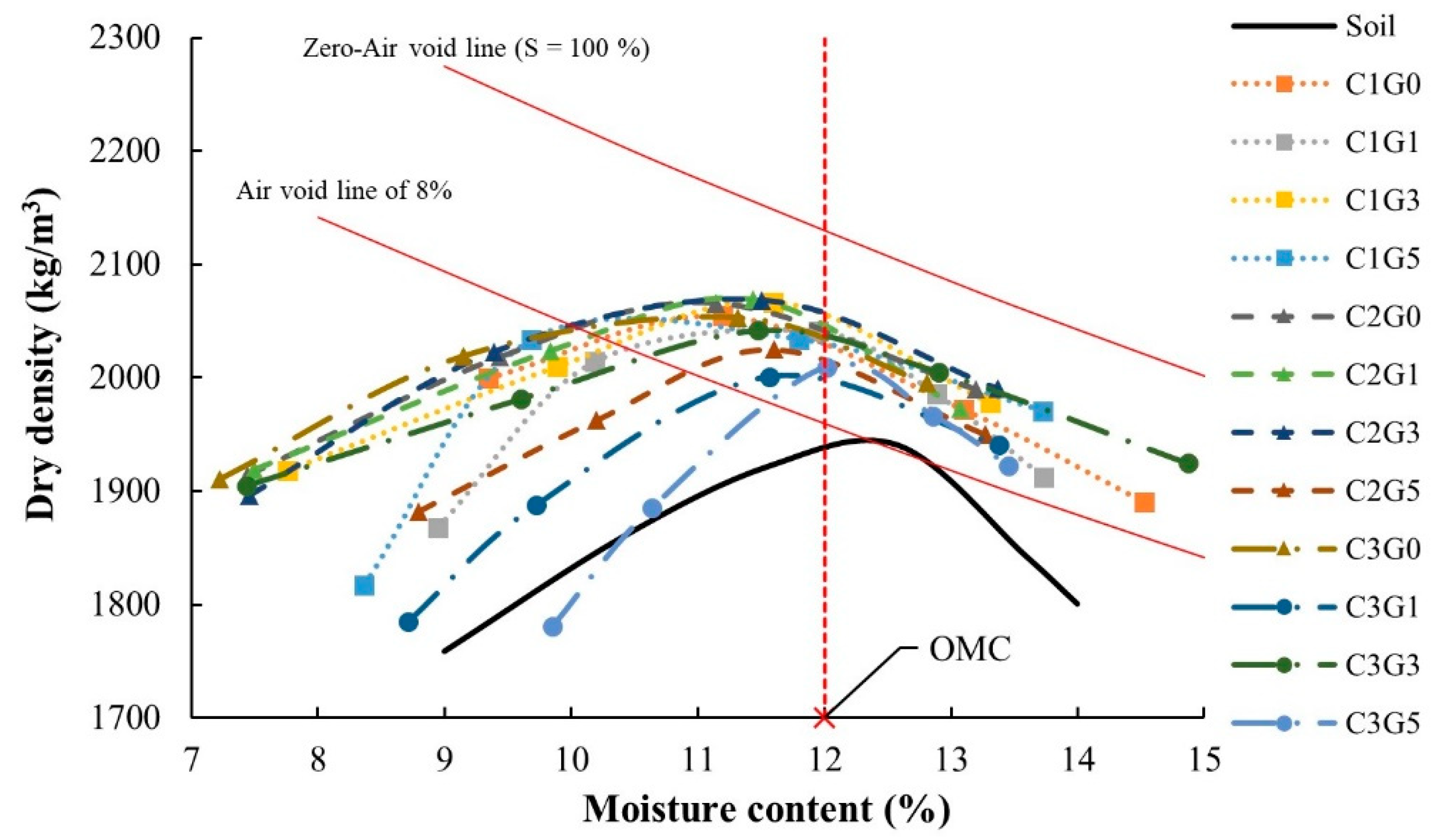
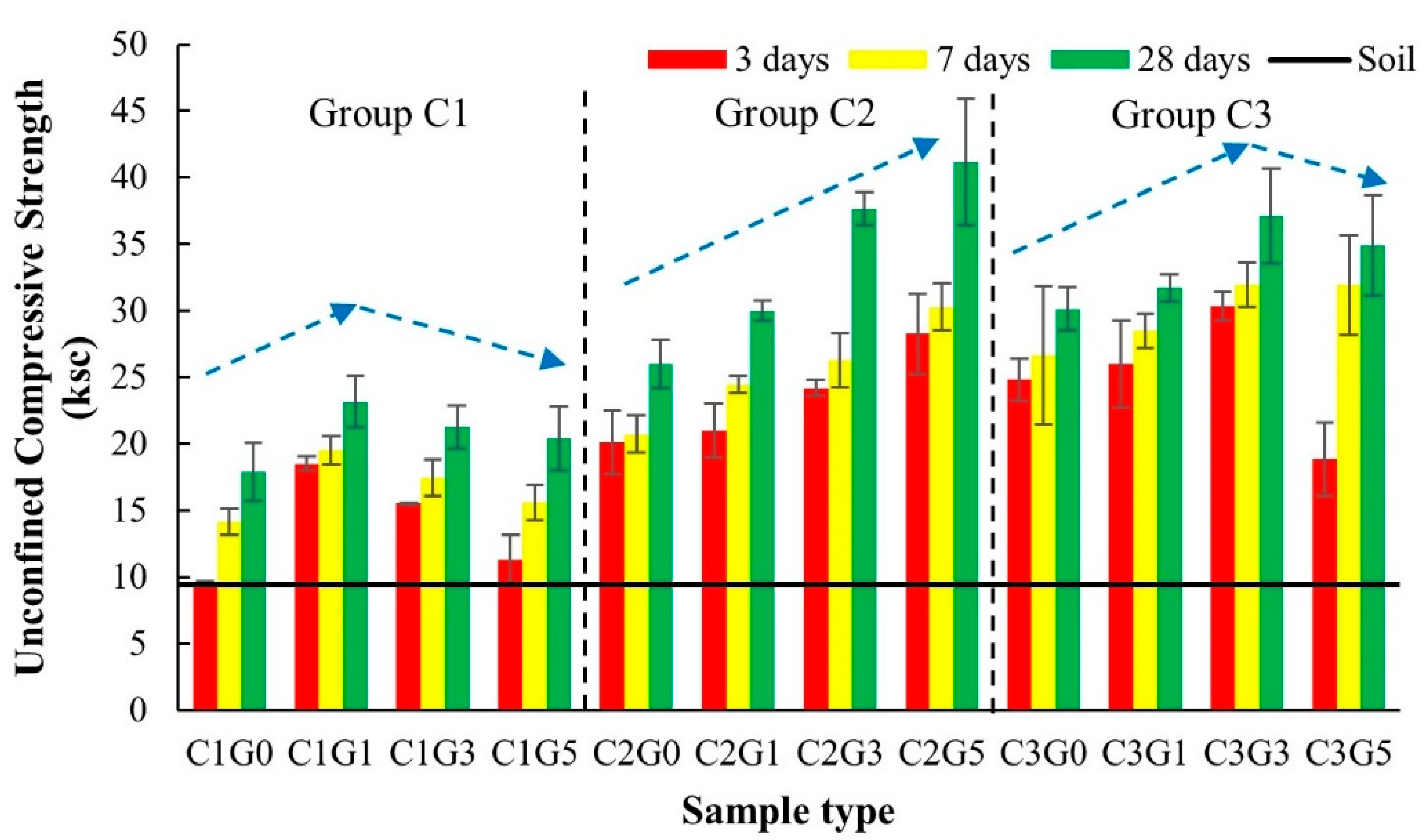
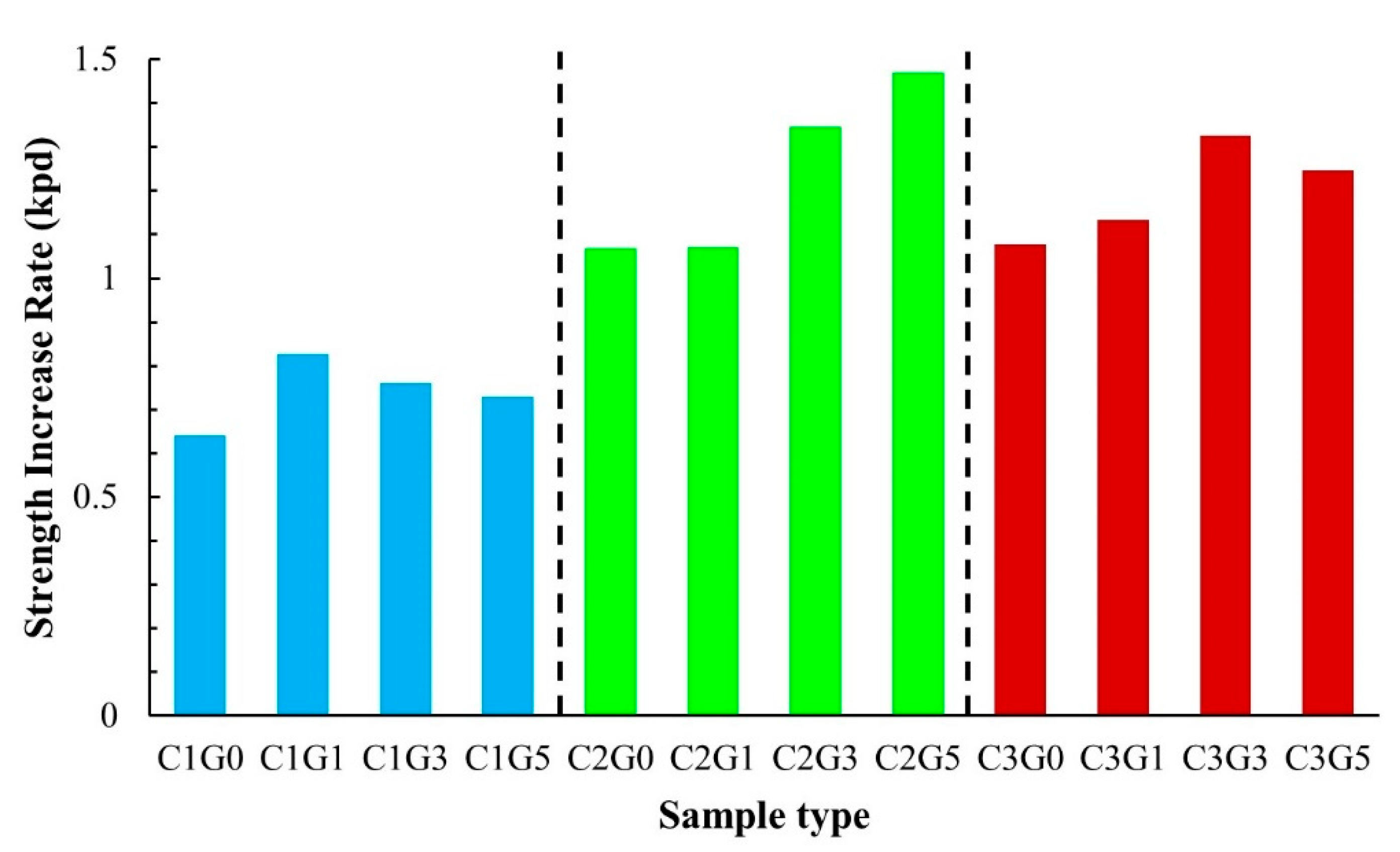
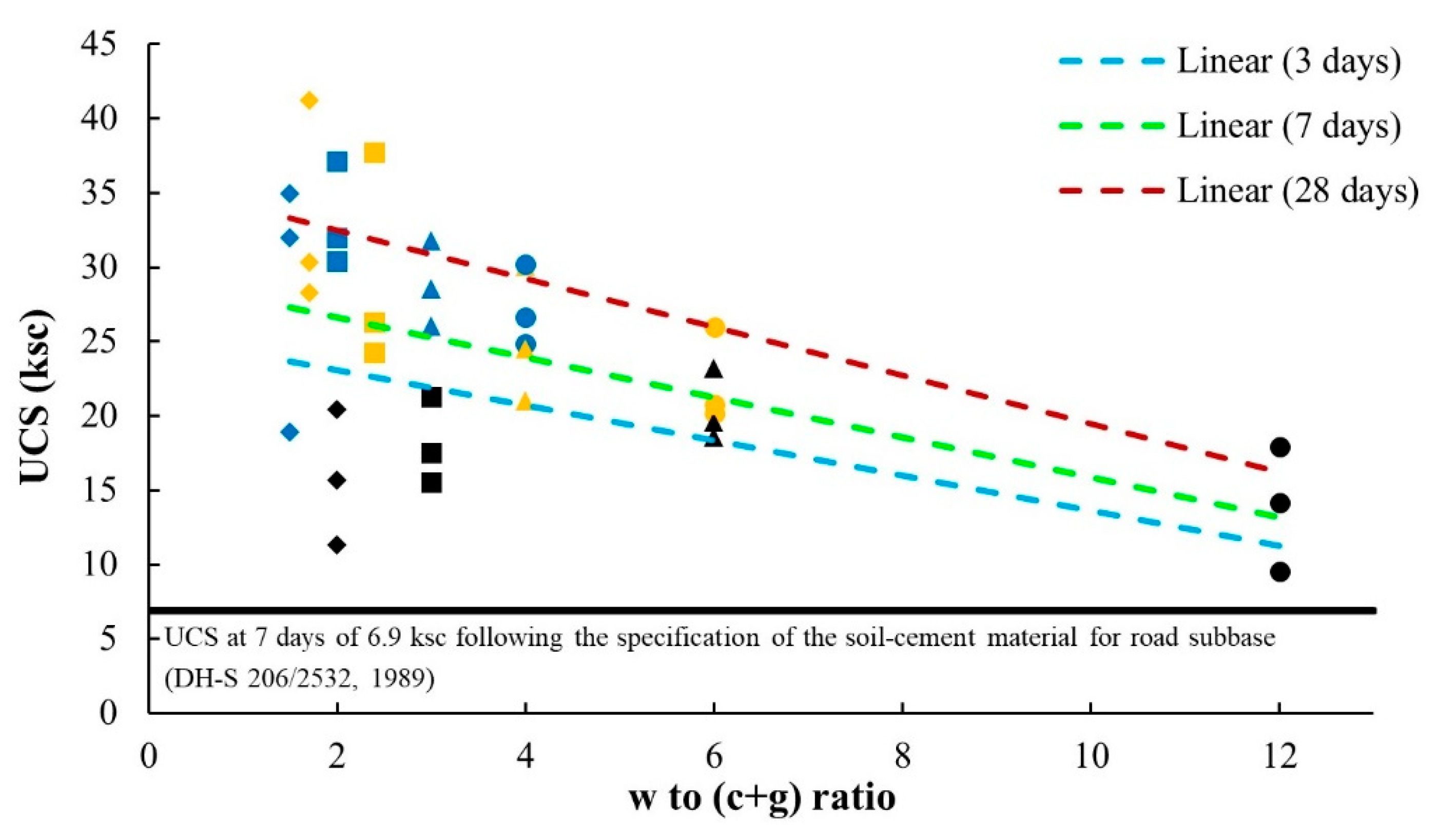
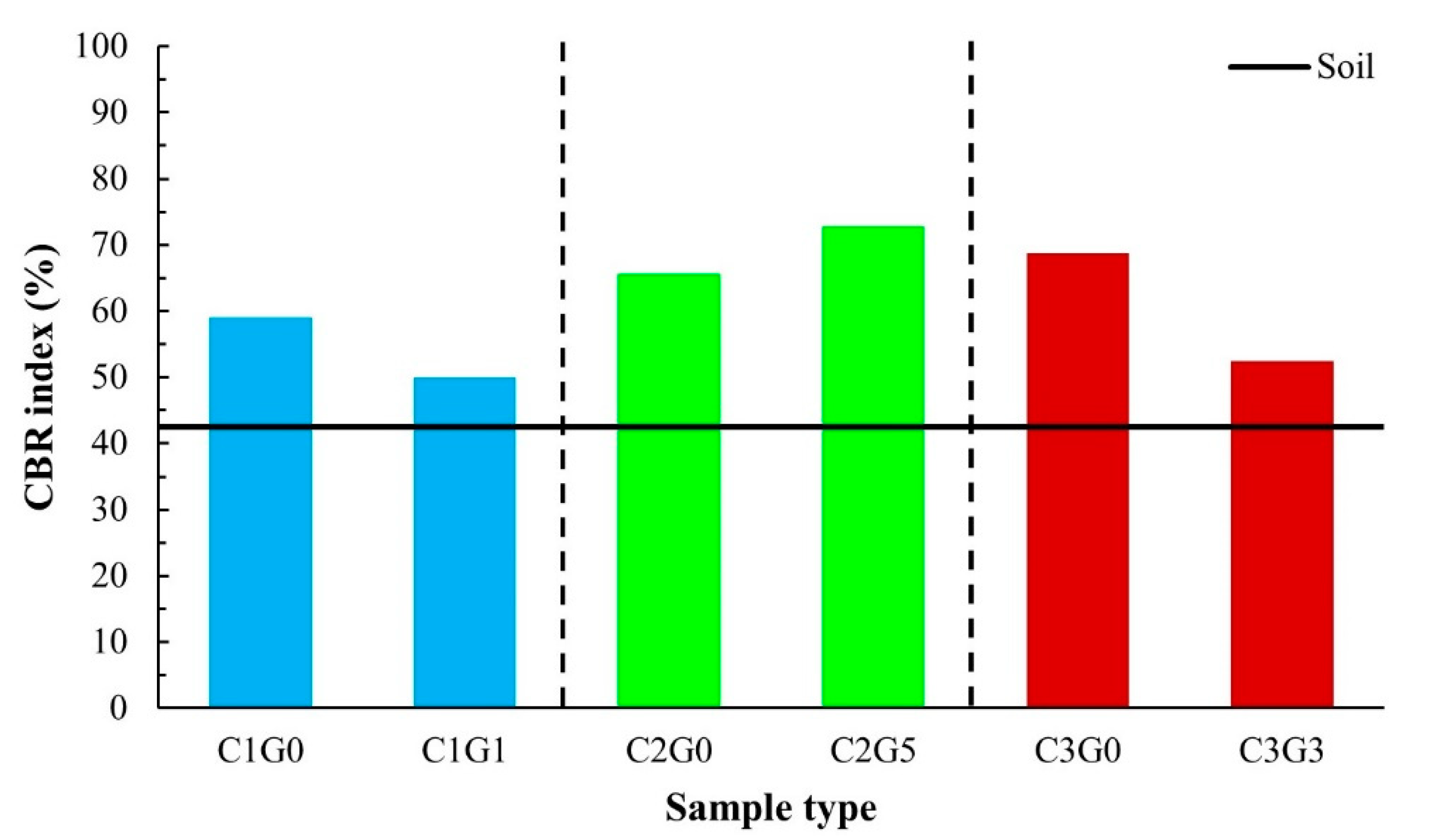
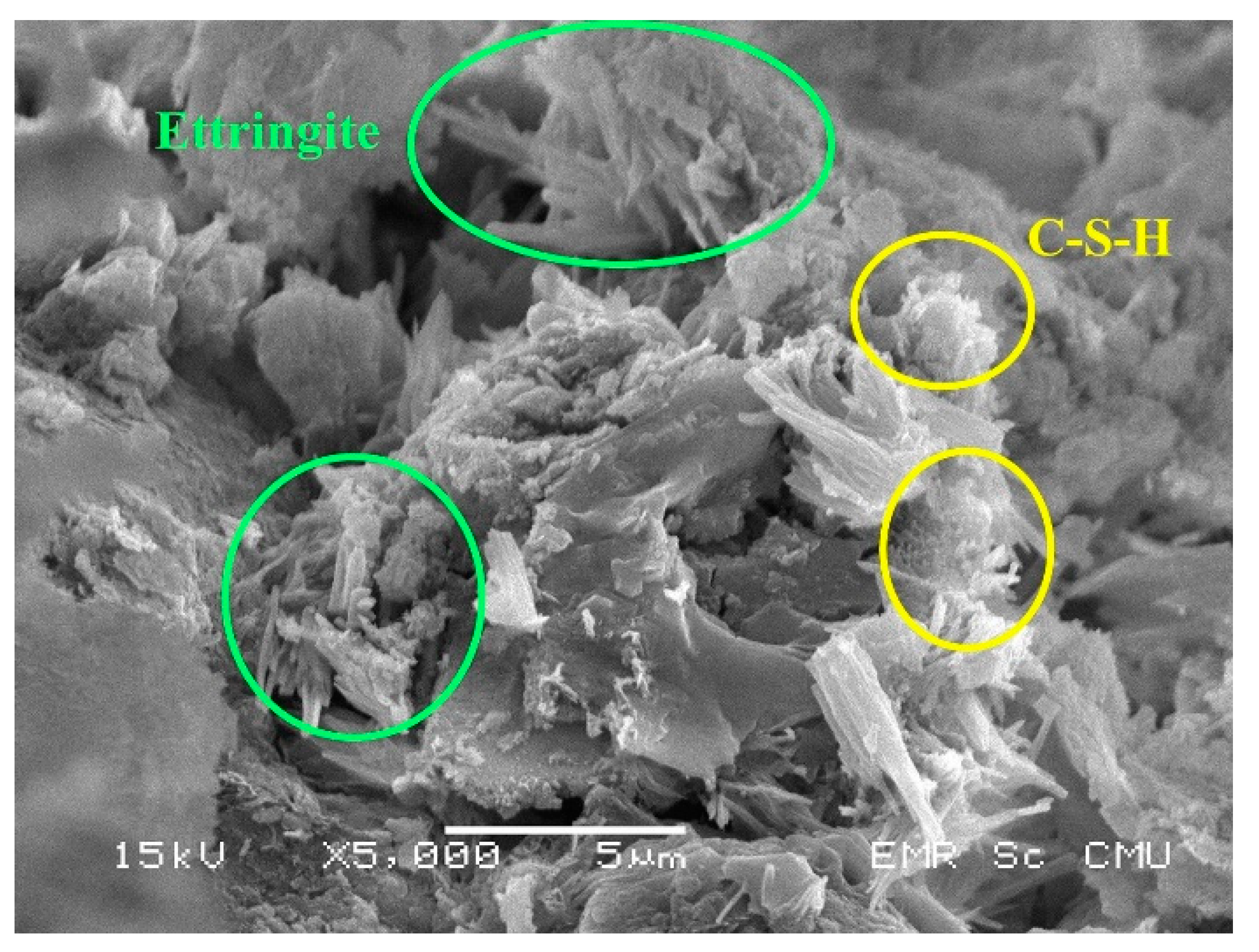
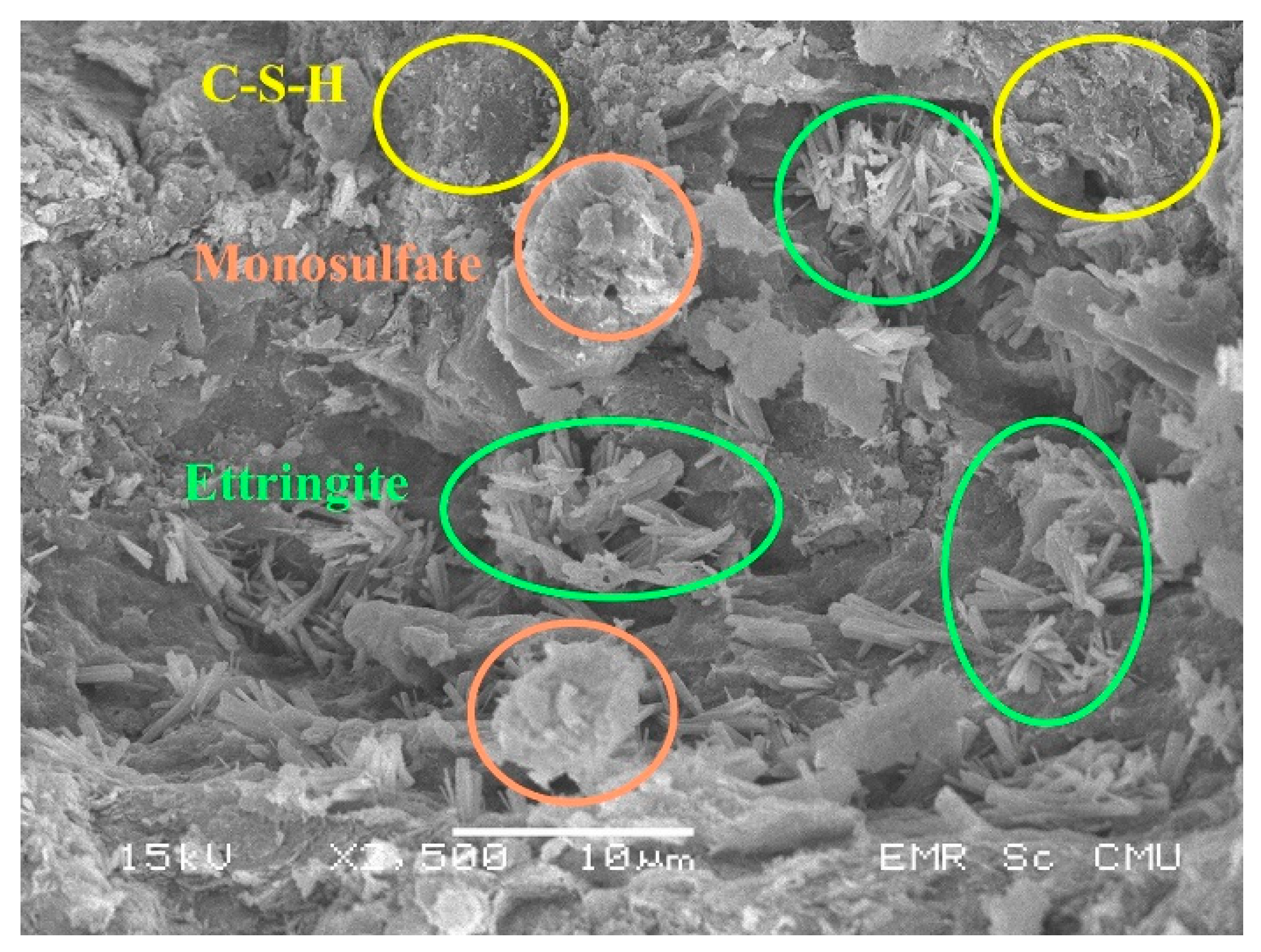

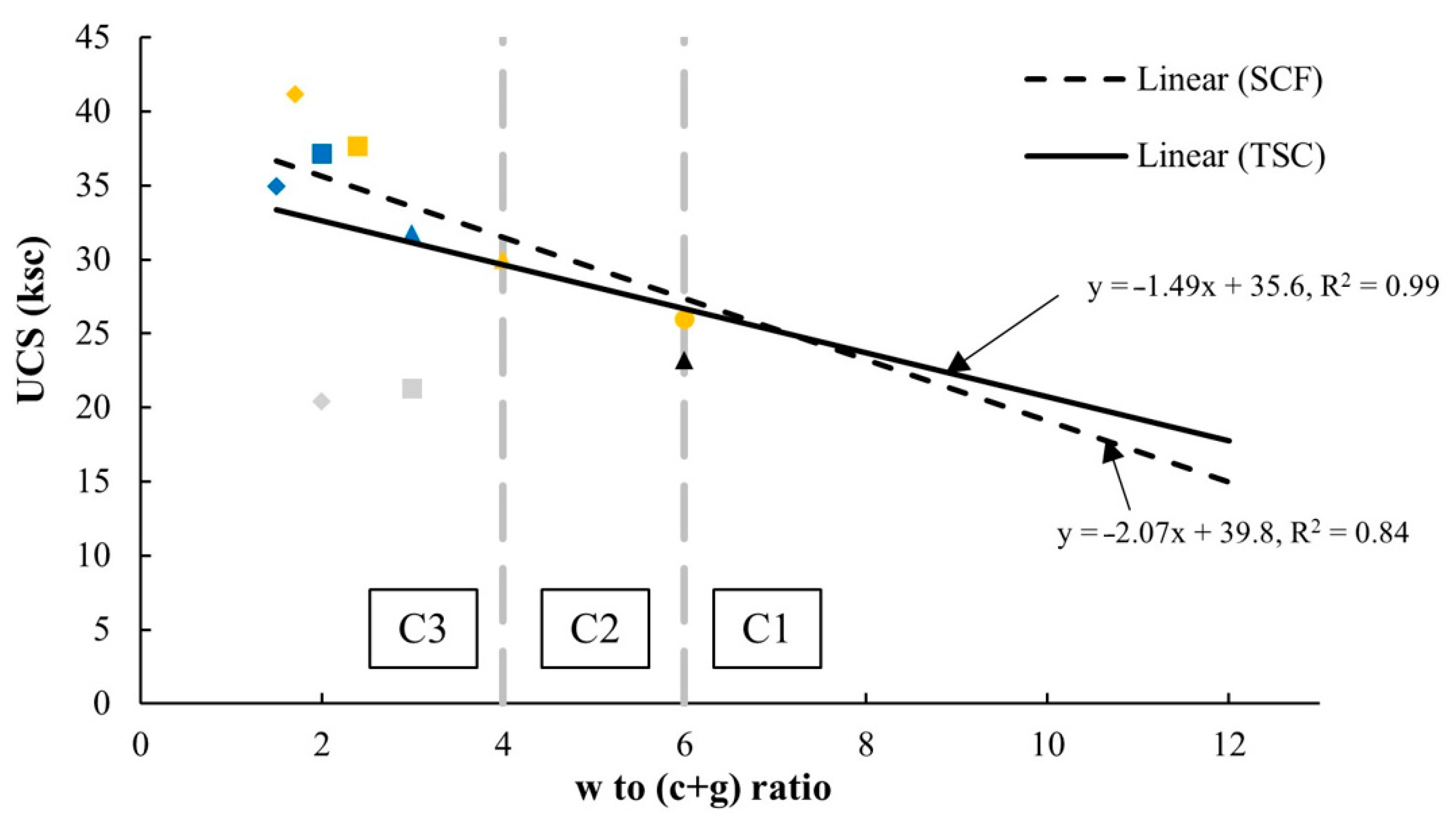
| Properties | Thailand: Department of Highways | Brazil: Brazilian National Highway Department [7] | Nigeria: Federal Ministry of Works and Housing | Malaysian: Jabatan Kerja Raya Malaysia | Recommended Criteria Material Selection for Lateritic Soil by Charman’s | |
|---|---|---|---|---|---|---|
| [6] | Heavy Traffic | Light Traffic | [8] | [9] | [10] | |
| California Bearing Ratio, (%) | ≥25 | ≥80 | ≥60 | ≥20 | ≥30 | ≥25 |
| Percent passing, (%) | - | - | - | No. 200 sieve ≤12 | No. 4 sieve ≥45 | - |
| Liquid limit, (%) | ≤35 | <35 | <40 | ≤25 | - | - |
| Plasticity index, (%) | ≤11 | <10 | <12 | ≤6 | ≤12 | ≤25 |
| Los Angeles abrasion loss, (%) | ≤60 | <65 | <65 | - | - | - |
| Swell, (%) | - | <0.2 | <0.2 | - | - | - |
| Compound | Formula (Notation) | Wt.(%) |
|---|---|---|
| Tricalcium silicate | 3CaO·SiO2 (C3S) | 49–55 |
| Dicalcium silicate | 2CaO·SiO2 (C2S) | 20–25 |
| Tricalcium aluminate | 3CaO·Al2O3 (C3A) | 10–12 |
| Tetracalcium aluminoferrite | 4CaO·Al2O3·Fe2O3 (C4AF) | 8 |
| Calcium sulfate dihydrate | CaSO4·2H2O (CSH2) | 5 |
| Other Sodium oxide Potassium oxide | Na2O (N) K2O (K) | 1–2 |
| Property | FGD-Gypsum | Natural Gypsum |
|---|---|---|
| Mineral composition | Gypsum, Quartz | Gypsum, Quartz, Dolomite |
| CaSO4·2H2O, (%) | 84–99.6 | 87.1 |
| Specific density, (g/cm3) | ~2.2 | ~2.3 |
| Main chemical properties, (%) CaO SO3 | 38 54 | 59 41 |
| Properties | A | B | C | DOH Standard (Subbase Materials) | Standard Method |
|---|---|---|---|---|---|
| Specific gravity, Gs | - | - | 2.86 | Not specified | ASTM D854 |
| Passing No. 200 (%) | 48 | 52 | 64 | ≤40 | ASTM D422 |
| Liquid Limit LL. (%) | 30 | 33 | 41 | ≤35 | ASTMD4318 |
| Plastic Limit PL. (%) | 20 | 20 | 19 | Not specified | |
| Plastic Index PI. (%) | 10 | 13 | 22 | ≤11 | |
| Classification (as per USCS) | CL | CL | CL | Not specified | ASTM D2487 |
| Purpose | Tests | Moisture | Cement Contents | FGD-Gypsum Contents (% by Dry Weight Soil) | Curing Days (Days) |
|---|---|---|---|---|---|
| (% by Dry Weight Soil) | |||||
| Compaction characteristics | Modified Proctor | Various moisture contents to find OMC | 0, 1, 2, and 3 | 0, 1, 3, and 5 | - |
| Strength development | Unconfined compressive strength | OMC | 0, 1, 2, and 3 | 0, 1, 3, and 5 | 3, 7, and 28 |
| Moisture sensitivity (CBR index) | California bearing ratio | The highest UCS specimens of each cement group at 28 days | 28 | ||
| Microstructure of soil–cement–FGD gypsum | Scanning electron microscope | ||||
| No. | Specimen Symbol | Cement (% of the Dry Weight of Soil) | FGD Gypsum (% of the Dry Weight of Soil) | Test Result | ||||||
|---|---|---|---|---|---|---|---|---|---|---|
| UCS (ksc.) | CBR (%) | CBR Index (%) | ||||||||
| 0 Day | 3 Days | 7 Days | 28 Days | Unsoaked | Soaked | |||||
| 1 | Soil | - | - | 9.43 | - | 40 | 17 | 42.5 | ||
| 2 | C1G0 | 1 | 0 | - | 9.56 | 14.18 | 17.94 | 44 | 26 | 59.1 |
| 3 | C1G1 | 1 | 18.54 | 19.54 | 23.16 | 50 | 25 | 50.0 | ||
| 4 | C1G3 | 3 | 15.54 | 17.46 | 21.27 | - | - | - | ||
| 5 | C1G5 | 5 | 11.29 | 15.63 | 20.42 | - | - | - | ||
| 6 | C2G0 | 2 | 0 | 20.16 | 20.74 | 29.92 | 67 | 44 | 65.7 | |
| 7 | C2G1 | 1 | 21.01 | 24.47 | 30.01 | - | - | - | ||
| 8 | C2G3 | 3 | 24.21 | 28.30 | 37.67 | - | - | - | ||
| 9 | C2G5 | 5 | 28.26 | 28.54 | 41.17 | 107 | 78 | 72.9 | ||
| 10 | C3G0 | 3 | 0 | 24.82 | 26.65 | 30.17 | 80 | 55 | 68.7 | |
| 11 | C3G1 | 1 | 26.04 | 28.52 | 31.73 | - | - | - | ||
| 12 | C3G3 | 3 | 30.36 | 31.97 | 37.12 | 78 | 41 | 52.4 | ||
| 13 | C3G5 | 5 | 18.88 | 31.95 | 34.92 | - | - | - | ||
| Process | Target USC | w/c | w/(c + g) | OMC | Cement Content | FGD Gypsum Content |
|---|---|---|---|---|---|---|
| (ksc) | (% by dry weight soil) | |||||
| TSC | 20 * | 10.5 | - | 12 | 1.14 | - |
| SCF | - | 9.6 | 1 | 0.25 | ||
| TSC | 30 * | 3.8 | - | 3.16 | - | |
| SCF | - | 4.7 | 2 | 0.55 | ||
| TSC | 32.6 | 2 * | - | 6 | - | |
| SCF | 35.7 | - | 2 * | 3 | 3 | |
Publisher’s Note: MDPI stays neutral with regard to jurisdictional claims in published maps and institutional affiliations. |
© 2021 by the authors. Licensee MDPI, Basel, Switzerland. This article is an open access article distributed under the terms and conditions of the Creative Commons Attribution (CC BY) license (https://creativecommons.org/licenses/by/4.0/).
Share and Cite
Maichin, P.; Jitsangiam, P.; Nongnuang, T.; Boonserm, K.; Nusit, K.; Pra-ai, S.; Binaree, T.; Aryupong, C. Stabilized High Clay Content Lateritic Soil Using Cement-FGD Gypsum Mixtures for Road Subbase Applications. Materials 2021, 14, 1858. https://doi.org/10.3390/ma14081858
Maichin P, Jitsangiam P, Nongnuang T, Boonserm K, Nusit K, Pra-ai S, Binaree T, Aryupong C. Stabilized High Clay Content Lateritic Soil Using Cement-FGD Gypsum Mixtures for Road Subbase Applications. Materials. 2021; 14(8):1858. https://doi.org/10.3390/ma14081858
Chicago/Turabian StyleMaichin, Phattharachai, Peerapong Jitsangiam, Toon Nongnuang, Kornkanok Boonserm, Korakod Nusit, Suriyavut Pra-ai, Theechalit Binaree, and Chuchoke Aryupong. 2021. "Stabilized High Clay Content Lateritic Soil Using Cement-FGD Gypsum Mixtures for Road Subbase Applications" Materials 14, no. 8: 1858. https://doi.org/10.3390/ma14081858
APA StyleMaichin, P., Jitsangiam, P., Nongnuang, T., Boonserm, K., Nusit, K., Pra-ai, S., Binaree, T., & Aryupong, C. (2021). Stabilized High Clay Content Lateritic Soil Using Cement-FGD Gypsum Mixtures for Road Subbase Applications. Materials, 14(8), 1858. https://doi.org/10.3390/ma14081858







